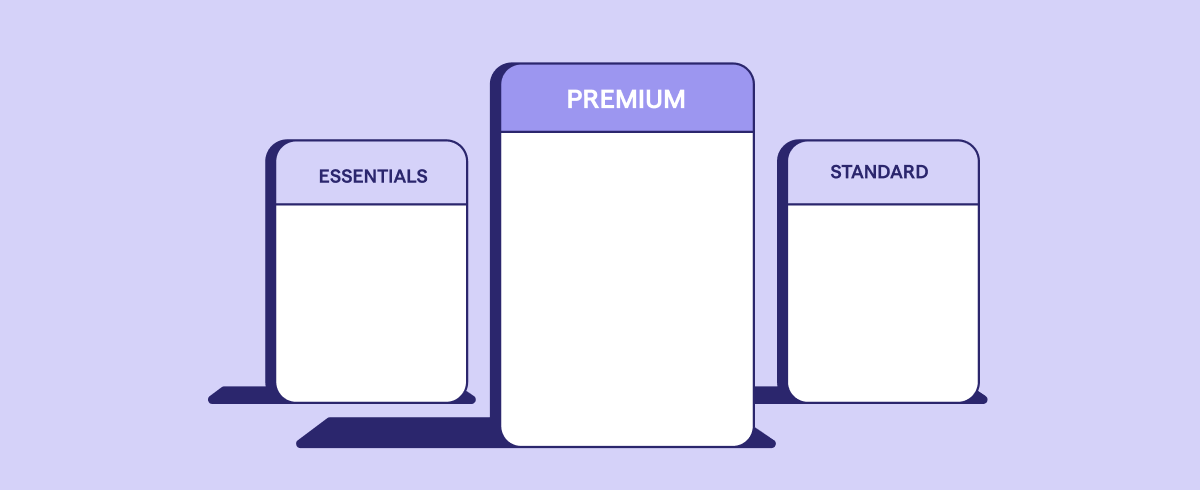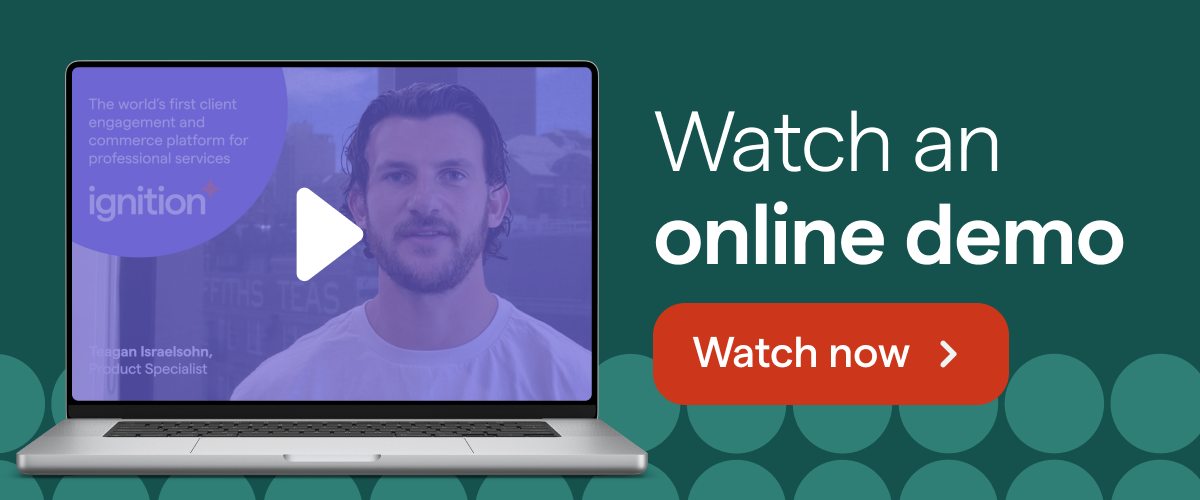How to price advisory services and engage your clients

When you’re introducing advisory, top of mind is how to price these services. This article shows why value-based pricing is so effective and offers tips for presenting pricing to clients, and how to use Ignition's three-tier structure to position your pricing effectively.
Value-based pricing: A smarter way to grow your CAS offering
For accounting firms delivering client accounting services (CAS), pricing is more than just setting a number—it’s about aligning your fees with the value you deliver. Value-based pricing empowers firms to move away from time-for-money models and toward more strategic, scalable revenue.
Unlike traditional billing, where effort or time is the main driver, value pricing focuses on outcomes. You’re paid based on the impact your services make on a client’s business—whether that’s better cash flow, more accurate reporting, or clearer financial insights. It’s a win-win model: clients receive high-impact support, and you create a more predictable, profitable revenue stream.
For CAS, this approach often leads to a leaner client base—but deeper engagements. Instead of needing hundreds of clients to remain viable, you can focus on fewer, higher-value relationships. This frees up capacity, reduces administrative overhead, and positions your firm as a true partner in business growth.
Firms using value-based pricing for CAS also report a more sustainable workload, even during busy season. With streamlined engagements, automated billing, and upfront pricing, your team can avoid burnout, improve margins, and create a more consistent client experience year-round.

How do you know how much to charge for advisory services?
The decision of how to price your advisory services is closely related to determining how much to charge for them. Sean M. Duncan, CPA, who runs SMD Consulting & Accounting in North Dallas, says there's no ‘right’ price since it can differ from one company to another. While you can ask other accountants or clients about how much they charge, it's all about trial and error, due to the many factors involved in determining your prices.
Tips for clearly communicating your pricing to clients
No matter how much you charge or how you structure your fees, it's important to clearly explain the specific factors that were used to determine the price. Hourly pricing offers clients a unit metric, without any clear indication of how much time or effort will be required to complete the task. So, it tends to lack clarity and fails to provide clients with a clear understanding of what they can expect for their investment.
When you’re presenting pricing to a client, it's important to be clear about what’s being priced, why certain tasks are priced a certain way, and the pricing schedule, which may include recurring charges, one-time fees, hourly rates, retainers, and estimates. Your pricing should provide the total investment for the proposed period of time.
How to use a three-tier pricing structure to boost transparency and sales
Implementing a three-tier pricing structure can be an effective way to clearly communicate pricing options to clients. This approach typically involves offering a bronze tier for basic services, a silver tier for basic services plus some advisory ones, and a gold tier for a more comprehensive, concierge-like experience. Unlike hourly pricing, which can lead to uncertainty and confusion, tiered pricing provides transparency and has become a popular choice among businesses. In fact, using this pricing model can even bolster sales efforts, as clients are able to choose from up to three proposals that best meet their needs. You can use this feature in Ignition to accelerate your sales process.

Why automation is key to scaling your CAS pricing and value
If your firm still charges by the hour, automation might seem like it reduces your billable time—and revenue. But for firms offering client accounting services (CAS), the opposite is often true.
In fact, research shows that firms who actively communicate the benefits of automation to their clients are nearly 3.5 times more likely to increase their prices successfully. Why? Because automation doesn’t just save time—it elevates the level of service you can deliver.
By automating routine and repetitive tasks—think invoicing, reconciliations, or data entry—you unlock more time to provide higher-value, advisory-driven CAS. It allows your team to be more responsive, more proactive, and more strategic in client relationships. And when clients see this shift in value, they’re more willing to invest in it.
With Ignition, automation becomes a seamless part of your workflow. From client onboarding to billing and payment collection, you can standardize processes, reduce manual errors, and get paid faster—giving your firm the capacity and confidence to grow.


How to engage your clients
How you’re pricing your advisory services and what you’re charging for these should all be outlined in your engagement letter. Engagement letters define the business contract between your business and your client. It outlines the fee structure, responsibilities and obligations of your firm and your client. It should detail the advisory services that you’re expected to provide and how frequently you will provide them.
Related article: Getting started with engagements letters in the United States
While the engagement is a vital step in onboarding new clients, it’s a process that shouldn’t be confined to the beginning of a relationship. To continue to build strong and transparent relationships, it pays to implement a system of regular re-engagement, repricing, and rescoping that happens at least once a year.
A regular re-engagement process not only creates an opportunity for you to assess your current advisory services and fees, it’s an ideal opportunity to discuss with your clients changes in their business or situation, which may require a need for different or additional advisory services. It’s one more way that you can continue to build your client relationships and at the same time increase your service revenue and manage your scope.
Why should you use an engagement letter?
If you undertake new work without a signed engagement you run the risk of not getting paid for unapproved work. You also create a situation where you and your clients' understanding of advisory services can become misaligned, potentially leading to a dispute.
With Ignition, your engagement letter or contract terms form part of your proposal to save you time. You can get a head start using the platform’s legally vetted, industry standard terms, or by uploading your own. You can even access engagement letter templates from selected accounting industry bodies. This helps prevent errors and reduce admin.Lock in revenue and streamline CAS billing with upfront payments
For firms delivering client accounting services (CAS), consistent cash flow is essential. With Ignition, you can secure payments from the moment a client accepts your proposal—no more chasing invoices or waiting for bank transfers.
By collecting credit card or ACH details upfront, Ignition enables automatic billing and payment collection as soon as your proposal is accepted. That means if you’re offering monthly CAS packages—like bookkeeping, payroll, or Virtual CFO services—payments are processed on time, every time. You stay focused on delivering value, not following up on overdue accounts.
This approach doesn’t just protect your cash flow—it creates a better experience for your clients, too. With clear pricing and automated billing built into your proposals, there’s no confusion or delay. It’s a win for efficiency, profitability, and peace of mind.
Over to you
Ignition makes offering new services to your clients fast and easy, with proposal templates created by leading industry experts and industry-vetted engagement letter templates, to help get you up and running in no time. Unlock next level efficiency in your practice with automated client billing and payments. Watch our online demo today to see how you can save time and money with Ignition.



